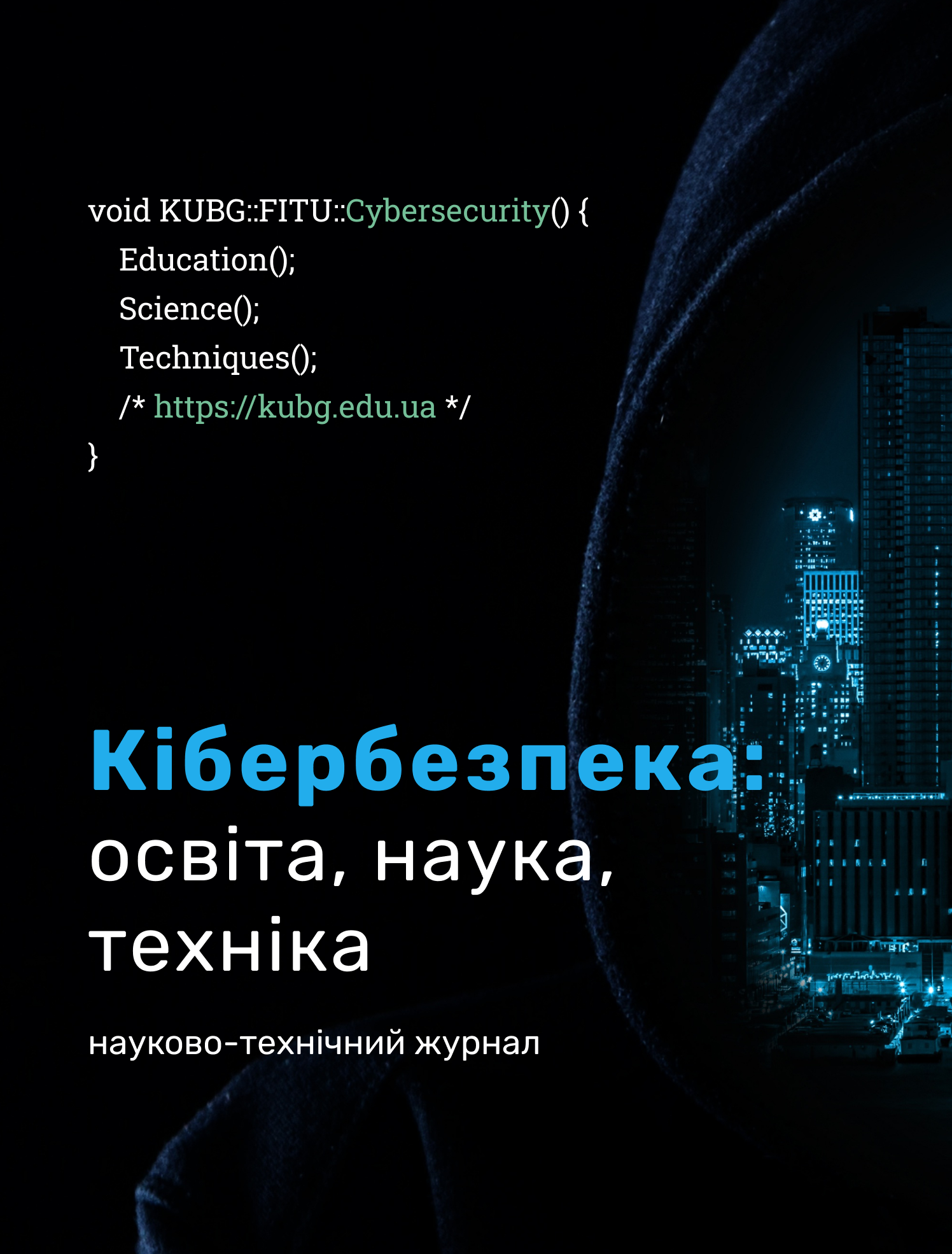CLASSIFICATION AND METHODS OF DETECTION OF PHISHING ATTACKS
DOI:
https://doi.org/10.28925/2663-4023.2024.24.6980Keywords:
cyber security; cyberspace; phishing cyberattacks; phishing messagesAbstract
The reliable operation of data transmission networks, computer systems and mobile devices is a mandatory condition for the effective functioning of the state and society, and the life of an individual. The reliability of key information systems for public use depends on many factors: cyber attacks, hardware and software failures, and various types of errors. Rapid expansion of threats to national security in the 21st century. entrusts state authorities with the tasks of their prevention, detection and neutralization. Cyber security is increasingly viewed as a fundamental problem of the state, which comprehensively affects its security, defense, economy, and almost all spheres of public life. The Internet gave a powerful impetus to the development of mass communication, trade and information exchange. However, today it is the area where many crimes are committed. The impersonal nature of digital infrastructure has made identity theft a natural and highly attractive project. Cybercriminals actively use various means of stealing information, including phishing. At the current stage and in the future, the development of both individual societies and states, as well as the world in general, will be carried out in accordance with the concept of the information society, which is connected with the use of information and telecommunication technologies in the acquisition, storage and processing of information in everyday life Phishing is a serious online security problem that involves spoofing genuine websites to trick online users and steal their confidential information. Analyzing these definitions, we can conclude that “phishing” can be considered in different ways, but the main purpose of its conduct remains unchanged—stealing data. The practical value of the results lies in the possibility of using the obtained classifier for further creation of software solutions for recognizing phishing sites. It, as well as a set of characteristics, can be implemented in anti-phishing browser extensions or other anti-phishing tools.
Downloads
References
Antonelli, C., Geuna, A., & Steinmueller, W. E. (2000). Information and communication technologies and the production, distribution and use of knowledge. International Journal of Technology Management, 20(1/2). https://doi.org/10.1504/ijtm.2000.002853
Mansell, R. (2013). The life and times of the Information Society. Prometheus, 28(2), 165–186. https://doi.org/10.1080/08109028.2010.503120
Fishynh (Phishing), Vishynh (vishing), Farminh — shakhraistvo v Interneti Entsyklopediia internet reklamy. (n.d.). Entsyklopediia internet reklamy. http://vse-prosto.vestop.rf/fishing-phishingvishing-vishing-farming.html
Whittaker, C. (2013). Large-scale automatic classification of phishing pages. Network and Distributed System Security Symposium.
Phishing Activity Trends Report, 1st Quarter. (2019). APWG. http://docs.apwg.org/reports/apwg_trends_report_q1_2019.pdf
Akulych, M. (2022). Fyshynh y marketynh. Litres.
Shcho take fishynh i yak vid noho zakhystytys. (n.d.). https://www.fg.gov.ua/articles/50140-shcho-take-fishing-i-yak-vid-nogo-zahistitis.html
Birk, D., Gajek, S., Grobert, F., & Sadeghi, Ah.-R. (2007). Phishing Phishers—Observing and Tracing Organized Cybercrime. Second International Conference on Internet Monitoring and Protection.
Brenner, S. (2002). Organized Cybercrime? How Cyberspace May Affect the Structure of Criminal Relationships. North Carolina Journal of Law and Technology, 4.
Kumar, A., Chatterjee, J.M., & Díaz, V.G. (2020). A novel hybrid approach of SVM combined with NLP and probabilistic neural network for email phishing. International Journal of Electrical and Computer Engineering (IJECE), 10(1), 486–493. https://doi.org/10.11591/ijece.v10i1
Sheng, St., Holbrook, M., Kumaraguru, P., & Cranor, L. (2010). Who Falls for Phish? A Demographic Analysis of Phishing Susceptibility and Effectiveness of Interventions. 28th International Conference on Human Factors in Computing Systems, 373–382. https://doi.org/10.1145/1753326.1753383
Dhamija, R., Tygar, J. D., & Hearst, M. (2006). Why phishing works. SIGCHI Conference on Human Factors in Computing Systems, 581–590.
Downs, J. S., Holbrook, M., & Cranor, L. F. (2007). Behavioral response to phishing risk. Anti-Phishing Working Groups 2nd Annual Ecrime Researchers Summit, 269, 37–44.
Wu, M., Miller, R. C., & Garfinkel, S. L. (2006). Do security toolbars actually prevent phishing attacks? SIGCHI Conference on Human Factors in Computing Systems, 601–610.
Published
How to Cite
Issue
Section
License
Copyright (c) 2024 Роман Штонда, Юлія Черниш, Тетяна Терещенко , Катерина Терещенко, Юрій Цикало , Сергій Поліщук

This work is licensed under a Creative Commons Attribution-NonCommercial-ShareAlike 4.0 International License.




